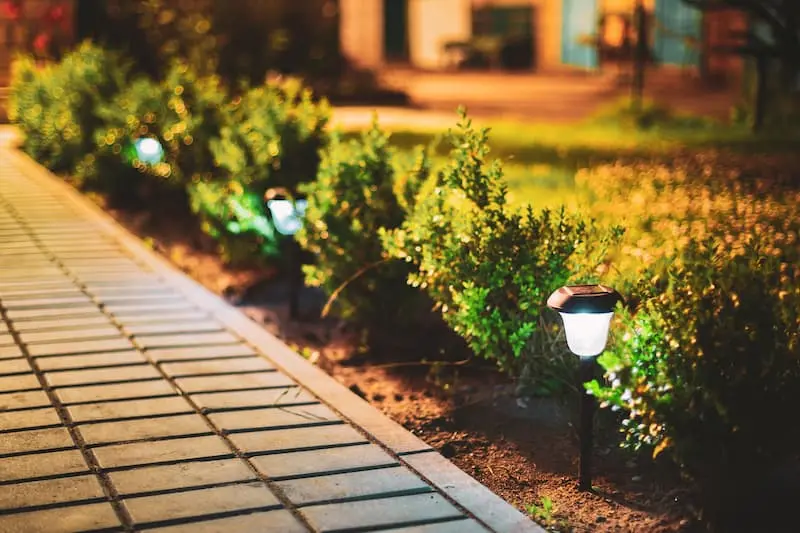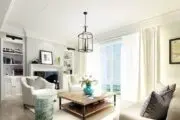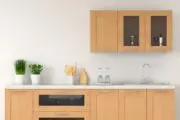Of all the design decisions homeowners make, boosting curb appeal is one of the most important, because first impressions matter most.
Good curb appeal not only sets the style tone and hints at what’s inside your home, but also entices future buyers and adds value.
The key is to use an approach that reflects the interior style, making sure that exterior finishes, materials and design choices flow cohesively, indoors and out.
Elements that combine for great curb appeal will vary depending on a home’s architectural features, location, and climate, but here are some general tips on how to boost curb appeal to make your home the most coveted on the block.
Landscaping is a major factor in boosting curb appeal
From intricate hardscaping to lush plantings and gardens, landscaping is an essential component of good curb appeal.
While landscape design can be complex, some of the basics go a long way, says landscape architect Robert Bell of Bell Design Inc.
“The most important elements for landscape curb appeal are keeping things clean and uncluttered. A clear view to the front door is usually the best policy to make people feel safe and welcome with strategic lighting for evening activities,” he says. “Remove any hanging branches or plant parts that might interfere with pathways.”
New construction homeowners have the simultaneous opportunity and challenge of landscaping their home with curb appeal in mind.
“Make sure any hedges are trimmed, and lawns are cut (if you have them) or even better for new properties, plant shrubs and groundcovers that will grow into neat shapes without a lot of maintenance,” says Bell.
He recommends, “boxwood or hornbeam trees and groundcovers like clover or creeping thyme.”
- Choose plantings that promote your home, rather than obscure it from view.
- Pick a small number of plantings and match the style and color palette of your home.
- Stick with native plants to support the local environment, but also to make your home look appropriate for the region.
- Be mindful of how plantings look from a distance (i.e. from the street) as that vantage point matters for curb appeal.
Incorporate lighting
Lighting plays a dual role in curb appeal: safety and aesthetics.
You need bright, directional lighting to navigate walkways when it is dark outside to avoid tripping. Well-lit entryways, front and side porches deter intruders.
Aesthetically, lighting can be positioned strategically for enhancement.
- Uplighting under trees or shrubs adds emphasis and warmth.
- Lighting placed within eaves subtly highlights architectural features.
- Wash lighting, cast across the home extends a warm glow and creates dimension, rather than spotlights that can be harsh.
- Statement light fixtures add decorative flair, such as post lights, lane lighting, pillar lights, porch sconces or garage door lights.
- Solar lights along the driveway and walkway draw the eye towards the front door, which is the goal of good curb appeal.
Pick the right exterior paint colors
Exterior paint colors should be chosen for aesthetic appeal, but maintenance should be considered as well, according to Ashley McCollum, Glidden Paint by PPG color expert.
“Take into account how frequently you want to maintain the color. Dark colors do not wear as well and will need to be painted more frequently. On the other hand, light colors are lower maintenance, but are more utilized, thus not offering as much individuality to your home’s exterior,” she says.
For more cautious homeowners, “Stick to the trim for bold colors,” says McCollum, because “exterior paint colors cover a lot of real estate,” so the intensity of a darker color might be more than you think.
“If you really want a strong color on your home, subdue the intensity by choosing something with a lot of gray in it,” she says.
Darker colors absorb more heat, and could contribute to higher utility bills, so that should be considered too.
On the other hand, “White paint is one of the most popular exterior house colors. It reflects sunlight, keeps the place cool, and goes with just about anything,” says McCollum. However, with white being the prevalent home exterior color, it’s harder to make your home stand out.
If opting for a white exterior, turn to other elements of your curb appeal, such as landscaping, for color.
Another approach is to look to your home’s natural surroundings for color inspiration.
“View your house from the street and against any large, established plants in the area. Do you have a hedge near your home? A deep green arborvitae hedge will be the same color all year long, so tie into that green with Mountain Mist,” says McCollum.
“If the view behind your house is mostly sky, consider a coating of Glacier Lake, which will look great against that blue sky and will serve as a wonderful foil for any foundation plantings you put near your home,” she says.
Use the roof to boost curb appeal
While the roof is the undeniable workhouse of the home, protecting from the elements and regulating temperature, it also plays a major role in curb appeal.
Given the size of a roof, it can seal the deal for curb appeal or have the opposite impact. The color, pitch and slope of your roof can completely change the overall look of your home. Materials matter as well.
While asphalt shingles tend to be most popular, tin roofs, cedar shake, tile and slate are trending as alternative materials that make your home stand out among the neighbors-in a good way.
Focus on the front door
Nothing makes a style statement like a beautiful front door. It’s eye-catching and communicates your home’s style instantly.
Upgrade your door with stained or etched glass inlay, transoms or sidelights.
Make your front door even more prominent by installing trim around the doorframe. While there is nothing more elegant than a classic black door, colorful choices are trending, including reds, yellows and blues.
Quick and easy curb appeal tips
For an extra boost to your curb appeal:
- Add a seasonal wreath on the front door.
- Update hardware, including mailbox, door handles and locksets. While mixing metals is trending for your home’s interior style, don’t do this outside, rather stick with a single finish and color.
- Replace gutters and downspouts in a contrasting color to the exterior
- Update window trim or accessorize windows with window boxes.
- Use symmetrical planters as a quick and movable way to add color and greenery.
- Tend to the driveway, fixing cracks and looking for weed growth. Smooth out transitions between paved and unpaved areas with pavers or flagstones.









